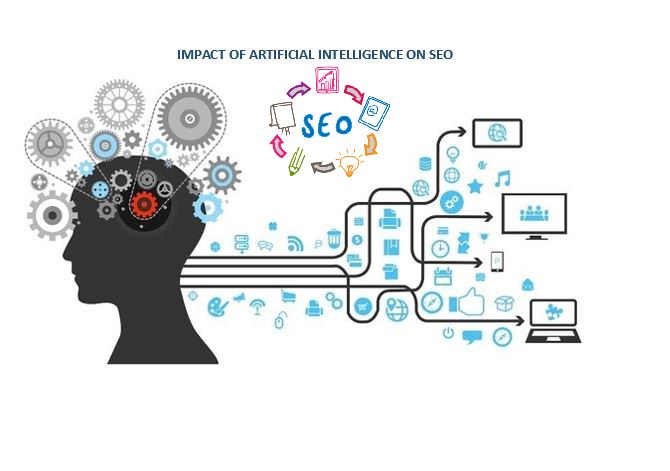
Artificial Intelligence (AI) is intelligence demonstrated by machines, unlike the natural intelligence displayed by humans and animals, which involves consciousness and emotionality.
‘Strong’ AI is typically named as artificial general intelligence (AGI) while endeavors to copy ‘natural’ intelligence have been called artificial biological intelligence (ABI).
Leading AI course readings characterize the field as the investigation of “intelligent agents”: any gadget that sees its current circumstance and makes moves that augment its opportunity of effectively accomplishing its objectives.
the expression “artificial intelligence” is regularly used to depict machines that impersonate “psychological” capacities that people partner with the human brain, for example, “learning” and “problem solving”.

AI (Artificial Intelligence) :- Challenges
1. Reasoning, problem solving
Early researchers developed algorithms that imitated bit by bit thinking that people use when they address riddles or make coherent allowances.
These algorithms end up being inadequate for taking care of enormous thinking issues since they encountered a “combinatorial explosion”: they turned out to be dramatically more slow as the issues became bigger.
Indeed, even people seldom utilize the bit by bit allowance that early AI examination could display. They tackle the majority of their issues utilizing quick, natural decisions.
2. Knowledge representation
Information portrayal and information engineering are integral to traditional AI research. Some “master frameworks” endeavor to accumulate express information controlled by agents in some restricted area.
Among the things an exhaustive conventional information base would contain are: objects, properties, classifications and relations between objects; circumstances, occasions, states and time; causes and effects; information about information (what we think about what others know); and numerous other, less well-informed spaces.
The most broad ontologies are called upper ontologies, which endeavor to give an establishment to any remaining knowledge by going about as middle people between space ontologies that cover explicit information about a specific information space (field of interest or space of concern).
A portrayal of “what exists” is a metaphysics: the arrangement of items, relations, ideas, and properties officially depicted so programming agents can decipher them.
3. Planning
Intelligent agents should have the option to define objectives and accomplish them. They need an approach to picture the future—a portrayal of the condition of the world and have the option to make forecasts about how their activities will transform it—and have the option to settle on options that augment the utility (or “worth”) of accessible decisions.
assuming the agent isn’t the lone actor, it necessitates that the agent can reason under vulnerability.
Multi-agents arranging utilizes the participation and rivalry of numerous agents to accomplish a given objective. Rising conduct, for example, this is utilized by developmental calculations and multitude knowledge.
4. Learning
AI (ML), a central idea of AI research since the field’s beginning, is the investigation of PC calculations that improve naturally through experience.
unsupervised learning is the capacity to discover designs in a flood of contribution, without requiring a human to name the information sources first.
supervised learning incorporates both grouping and mathematical relapse, which requires a human to name the information first.
The two classifiers and relapse students can be seen as “fuction approximators” attempting to get familiar with an obscure (conceivably implied) work; for instance, a spam classifier can be seen as taking in a capacity that maps from the content of an email to one of two classifications, “spam” or “not spam”.
5. Social Intelligence
Moravec’s paradox can be stretched out to numerous types of social insight. Circulated multi-specialist coordination of independent vehicles stays a troublesome issue.
Moderate victories identified with emotional figuring incorporate printed opinion investigation and, all the more as of late, multimodal influence examination (see multimodal assumption investigation), wherein AI orders the influences showed by a recorded subject.
Some PC frameworks impersonate human feeling and articulations to show up more touchy to the enthusiastic elements of human association, or to in any case work with human–computer interaction.
6. General Intelligence
Historically, tasks, for example, the Cyc information base (1984) and the huge Japanese Fifth Generation Computer Systems activity (1982–1992) endeavored to cover the broadness of human insight.
many researcher foresee that such “narrow AI” work in various individual spaces will ultimately be consolidated into a machine with fake general knowledge (AGI), joining the majority of the tight abilities referenced in this article and sooner or later in any event, surpassing human capacity in most or every one of these spaces.
One prominent model is that DeepMind during the 2010s built up a “summed up man-made brainpower” that could learn numerous assorted Atari games all alone, and later built up a variation of the framework which prevails at successive learning. Besides move learning,
Some contend that some sort of (presently unseen) theoretically clear, yet numerically troublesome, “Expert Algorithm” could prompt AGI.
